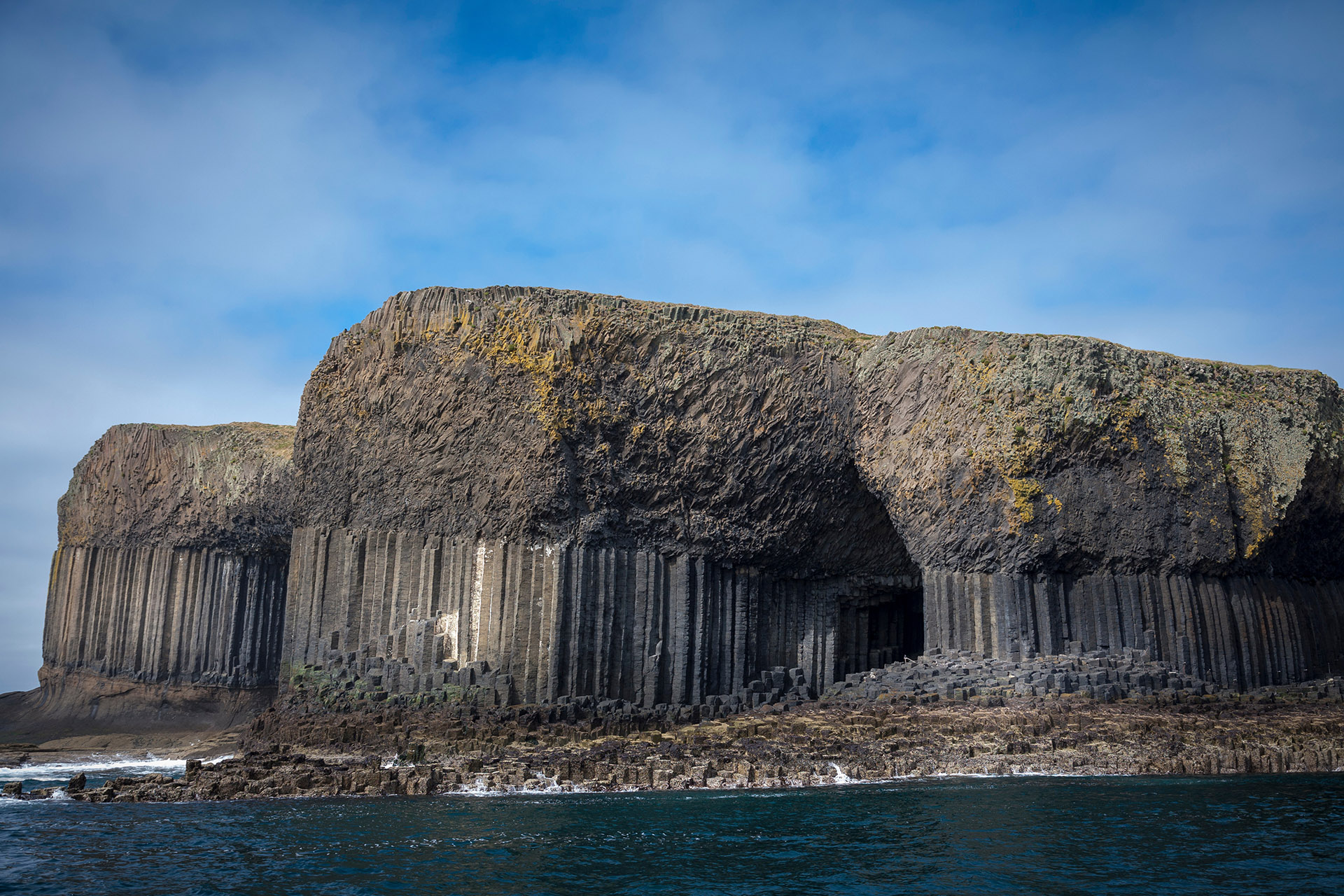



Accessible from Mull and Iona
Fingal’s Cave, located on the uninhabited island of Staffa, is arguably the most famous and visually striking cave in the Hebrides. It is a natural wonder formed from hexagonal basalt columns, a geological phenomenon that also characterises the Giant’s Causeway in Northern Ireland. The cave’s unique structure allows for remarkable acoustics, earning it the Gaelic name “An Uamh Binn,” meaning “the melodious cave.” Its grandeur has inspired countless artists, most notably composer Felix Mendelssohn, who penned his “Hebrides Overture” after a visit in 1829, and painter J.M.W. Turner.
Visitors to Fingal’s Cave typically arrive by boat trip from Mull or Iona. Depending on sea conditions and tide, it’s often possible to land on Staffa and walk a natural pathway of hexagonal columns right into the cave, offering an immersive experience of its impressive scale and unique sounds. The entrance stands at around 60 feet high and 50 feet wide, extending some 230 feet deep into the island. It’s a truly awe-inspiring testament to natural geological processes.
The formation of Fingal’s Cave dates back approximately 60 million years during a period of intense volcanic activity. As molten basalt lava cooled and contracted, it fractured into the distinctive hexagonal columns seen today. Over millennia, the sea has eroded softer rock layers and exploited natural fissures, hollowing out the magnificent cave. The sheer regularity and symmetry of these columns make Fingal’s Cave a must-see for anyone visiting the area, offering both geological fascination and a sense of profound natural beauty.
/ Per Listing
Lorem ipsum dolor sit amet, lorem sit.
/ Per Listing
Lorem ipsum dolor sit amet, lorem sit.
/ Per Listing
Lorem ipsum dolor sit amet, lorem sit.
Claim request is processed after verification..
July, 2025
25
Friday
4:30 am - 5:00 am
5:00 am - 5:30 am
5:30 am - 6:00 am
6:00 am - 6:30 am
6:30 am - 7:00 am
7:00 am - 7:30 am
7:30 am - 8:00 am
8:00 am - 8:30 am
8:30 am - 9:00 am
9:00 am - 9:30 am
9:30 am - 10:00 am
10:00 am - 10:30 am
10:30 am - 11:00 am
11:00 am - 11:30 am
11:30 am - 12:00 pm
12:00 pm - 12:30 pm
12:30 pm - 1:00 pm
1:00 pm - 1:30 pm
1:30 pm - 2:00 pm
2:00 pm - 2:30 pm
2:30 pm - 3:00 pm
3:00 pm - 3:30 pm
3:30 pm - 4:00 pm
4:00 pm - 4:30 pm
4:30 pm - 5:00 pm
5:00 pm - 5:30 pm
5:30 pm - 6:00 pm
6:00 pm - 6:30 pm
6:30 pm - 7:00 pm
7:00 pm - 7:30 pm
7:30 pm - 8:00 pm
8:00 pm - 8:30 pm
8:30 pm - 9:00 pm
9:00 pm - 9:30 pm
9:30 pm - 10:00 pm
10:00 pm - 10:30 pm
10:30 pm - 11:00 pm
11:00 pm - 11:30 pm
11:30 pm - 12:00 am
August 26,2019
Awesome Job!
We have received your appointment and will send you a confirmation to your provided email upon approval.
